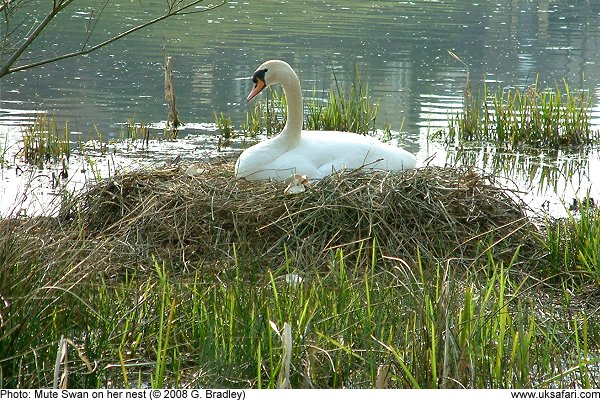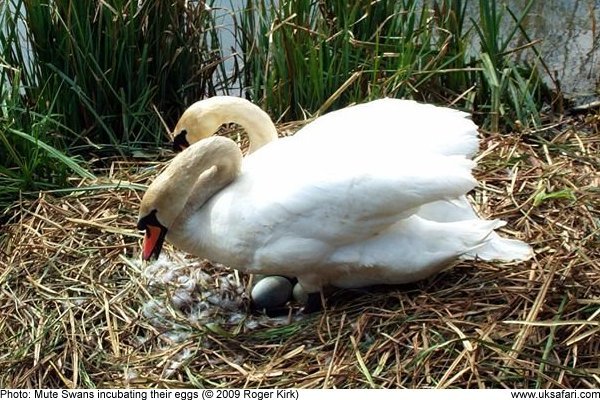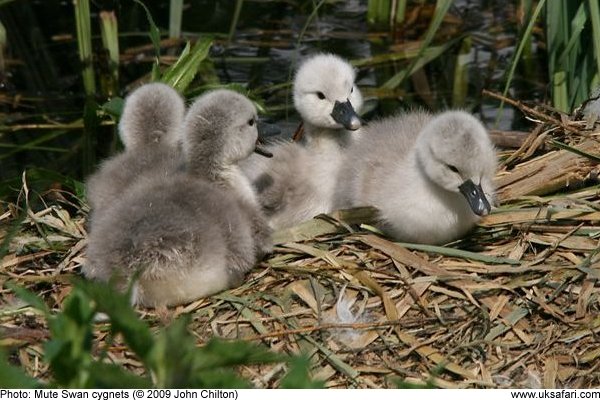 Mute Swans
Mute Swans
News > Mute Swans >

In late March Mute Swans start constructing their nests. They're big birds with big eggs, so you'd expect their nests to be a big construction... and they are... they're whoppers!

Try to imagine birds nests relative to human habitation. If say a Dunnock nest was on a par with a one bedroom semi-detached cottage, then the mute swan nest would be comparable to St. Paul's Cathedral.
It's about 80cm deep and well over a metre across. When it's finished the female lays between 5 and 12 eggs (usually 7) in a shallow depression in the centre. The pair take turns at incubating the eggs and driving away anyone or anything which comes near the nest.
You can instantly recognise the Mute swan by its black and red beak which has a black knob where it meets the forehead. They're called Mute swans because they make very little noise compared to other swans, but they're certainly not mute. They can be remarkably tame and approachable, but at nesting time they will make a loud hissing sound to warn off anyone, or anything, which comes too close to the nest.

The eggs take between 35 and 38 days to hatch. The young, known as cygnets, are grey coloured. It takes about two months before they are fledged, and a further 10 months before they are independent.
The population of Mute Swans in the UK has increased in recent years, most likely due to better protection of the species. The problem of lead poisoning on rivers has also largely been solved by a ban on the sale of lead fishing weights.
More info at: UK Safari Mute Swans Fact File

 Popular Pages
Popular Pages
Amphibians, Bats, Badgers, Beetles, Birds, Birds of Prey, Bumble Bees, Butterflies, Caterpillars, Creepy-Crawlies, Deadly Spiders, Dolphins, Dragonflies, E-Postcards, False Widow Spiders, Free Newsletter, Frogs, Fungi, Garden Spiders, Glow-Worms, Grey Squirrels, Hedgehogs, House Spiders, Ladybirds, Mammals, Marine Mammals, Moths, Owls, Reptiles, Spiders, Toads, Trees, Wildlife Hospitals
© Copyright 2017 G. Bradley - UK Safari | About Us | Links | Contributors



 Related Pages
Related Pages
